EUREKA, Nev. — Diamond Valley starts at the edge of Eureka, a small town in one of the most rural areas of the state. The valley stretches on for miles, and so does the aquifer beneath it, a reserve of underground water that farmers have used at unsustainable rates, year after year.
Springs started to dry decades ago. There were reports of fissures in the ground. Groundwater levels in some areas fell by more than 100 feet. The underground reservoir continues to decline by as much as two feet every year in certain areas, and that means wells could one day go dry.
Mark Moyle, who grows alfalfa in Diamond Valley, speaks in careful measures. Livelihoods are at stake. Moyle recognizes the problem. Everyone does. And he knows that cuts are coming. In recent years, Diamond Valley farmers have faced increasing pressure from the state and local ranchers to reduce use. But the state’s main tool for fixing the issue are immediate cuts that are blind to local concerns (a Diamond Valley farmer likens them to using a chainsaw for a surgery).
So Moyle and most of his neighbors started looking for alternatives.
They wanted precision and local control. Taking advantage of a new state law passed in 2011, officials gave them a green light to come up with another option. But the clock was now ticking: If the farmers failed to have a plan in effect by 2025, state regulators would be forced to slam the brakes on their overuse, an action that could shutdown most of the operations in the valley.
“We’re done,” Moyle said, describing what would happen if state regulators curtailed use. “And not only that, our life’s investment is done. You can’t re-market something that has no water.”
In 2018, after years of negotiations and discussions, the majority of Diamond Valley irrigators voted for a market-based system, governed by a local advisory board, that dictates the terms of the reductions, spreading out the water cutbacks over time and applying them across the board.
“How many people would sign up to take a financial hit?” Moyle asked during an interview earlier in August. “Well we all did, because in the long run, it's going to be better for all of us.”
Depending on whom you talk to, the plan is an experiment in conservation — an equitable way to reduce water use — or a seismic crack in the foundation of Western water law. By forcing all irrigators to make a sacrifice and cut back, the plan deviates from a primary principle of Western water law: that those with the oldest claims to water are protected from cuts in times of scarcity.
Across the West, groundwater basins and watersheds face a similar dynamic: State regulators issued more rights to water than there is water to go around. In Nevada, water users are closely watching Diamond Valley to understand the limits of the law and the potential paths forward.
For many, the question is not whether cuts are coming but who gets cut and when? Some see the 2011 statute, the legal basis for the Diamond Valley plan, as a tool for coming up with local solutions that avoid heavy-handed regulation from the state. They say such plans mirror other efforts across the West. But how far can the local plans go? And what are the legal guardrails?
Today, the Diamond Valley plan is on hold, and its future rests on whether the Nevada Supreme Court rules it is allowed under the 2011 statute. In April, a District Court judge in Eureka agreed with a group of local ranchers who said the plan conflicts with fundamental aspects of water law.
Moyle disagrees. He said that the plan is the type of solution that the Legislature intended.
“This didn’t just happen by accident,” he said. “This was deliberate.”
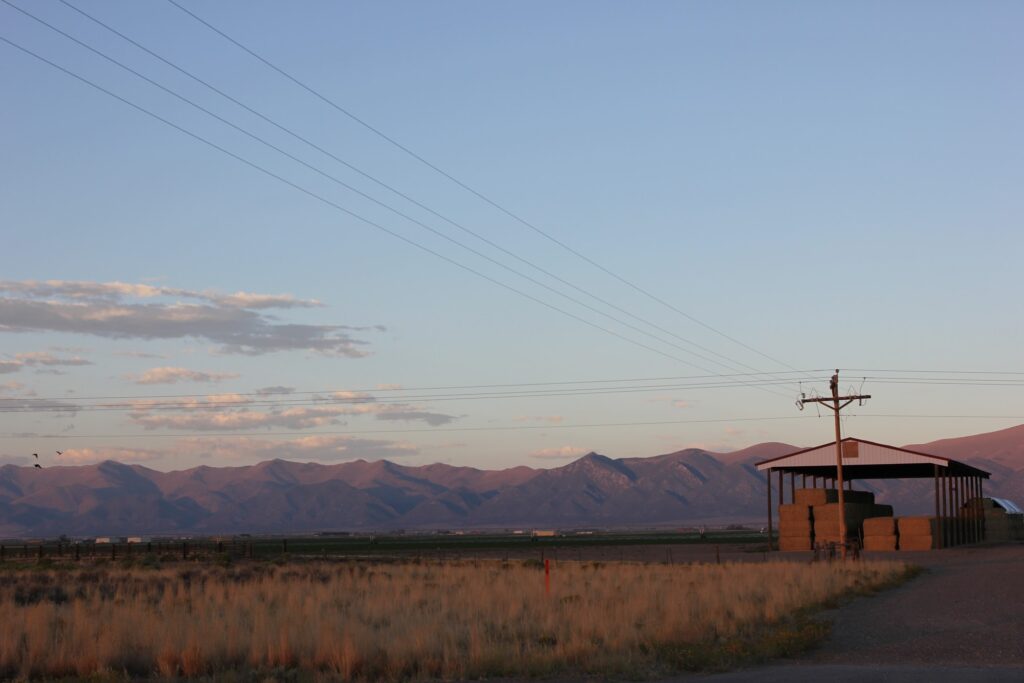
Decades in the making
When Reinhold Sadler, a German immigrant and the state’s ninth governor, set foot in Diamond Valley more than a century ago, the area looked noticeably different. The value of the land was less about the water beneath the ground than the water at the surface. Sadler, a businessman turned politician, established a ranch that relied on natural springs to irrigate crops and pasture.
Sadler Ranch, under different ownership, is still operating today. Yet those springs, and many others across the valley, have dried up or are under threat of drying up. As more groundwater was used to irrigate alfalfa fields over the past four decades, less water flowed into the springs.
The issue has been well-documented since the 1960s, but the state has taken little action to fix the valley’s overuse. In 2012, Sadler Ranch was purchased by new owners from San Francisco. Since then, its owners have pressured the state in court and in hearings to address the problem.
In 2014, Sadler Ranch filed a petition to initiate proceedings for a curtailment, a state-action to impose harsh water cuts on irrigators across the valley. It created an uproar. Levi Shoda, who manages the day-to-day operations at the ranch, framed it as a necessary wake-up call for state regulators. He said they were moving too slowly to curb the valley’s overuse of its limited water.
“What good is all this water that we're fighting for gonna be when the water is all gone?” he asked.
A curtailment is an extreme measure. It would require the state to turn off the wells based on when water rights were issued. In Diamond Valley, it could mean cutting off more than half of the groundwater used each year, a move that would devastate the farming community all at once.
By the state’s own description, curtailment by priority can be “dire” and “sudden.” Marty Plaskett, a Diamond Valley farmer, likens curtailment to giving the state a “chainsaw to do surgery with,” blind to realities on the ground, leaving irrigators without water that they used for half a century.
“If this was a problem that could have been solved easily,” he said, “it would have been done.”
For decades, curtailment has loomed over the valley, yet state regulators failed to impose cuts, allowing the problem to become progressively worse and making it harder to rip off the bandaid.
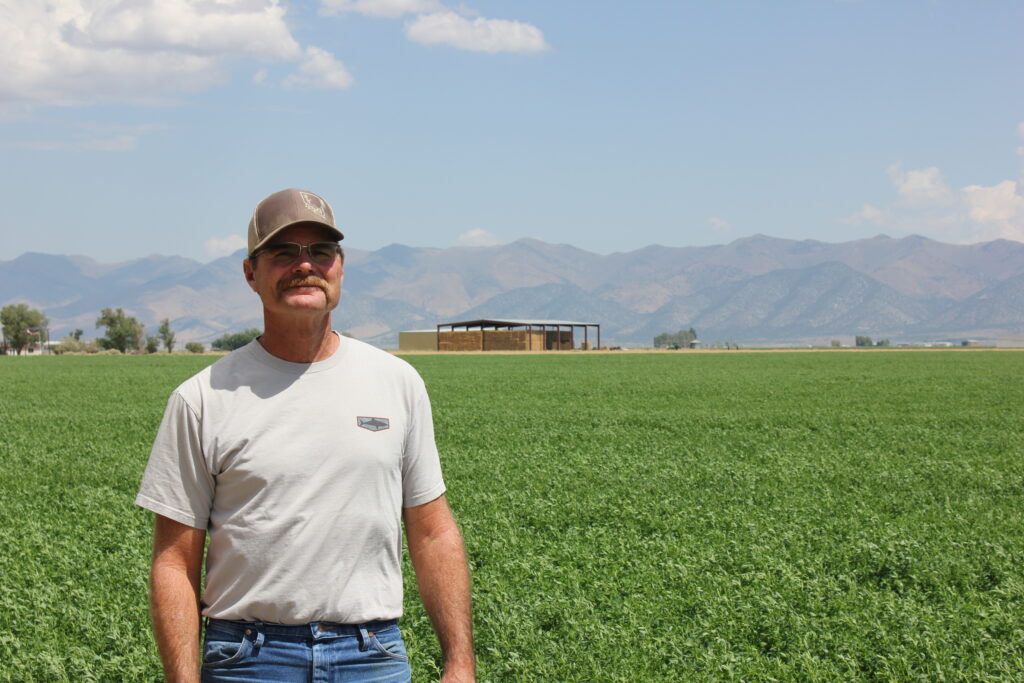
Water issues in Diamond Valley have been well-documented since the 1960s, amid a rush for land and water in the southern side of the valley. Here, where Moyle and his neighbors farm in close proximity to each other, irrigation pivots turn the valley into bright green crop circles.
Many irrigators in this area came about land and water through federal legislation known as the Desert Land Entry Act of 1887. The congressional legislation encouraged the settlement of the West with cheap public land if buyers were willing to irrigate it. Homesteading in the arid West posed challenges and, in many places, attempts often ended in failure. In Diamond Valley, the success rate was high — and so was the volume of water rights that state officials handed out.
Federal land managers and state officials knew that a water issue was brewing, and around 1962, Diamond Valley was closed off to new homesteading. But pressure, including from Sen. Alan Bible, re-opened the valley to more development, High Country News reported in 1993.
As electricity came to the valley, farmers invested heavily in infrastructure to pump water from the ground. Drillers punched wells, and the area grew into an agricultural hub in northeastern Nevada. Plaskett’s father was one of the well-drillers who made it feasible to tap into the aquifer.
“My dad drilled most of the wells here,” he said. “So I'm very in tune to the aquifer.”
In time, the valley became part of Eureka County’s social and economic fabric. Farmers sent their kids to schools in Eureka, a small town with a population of about 480 residents. Increased agricultural production also helped stabilize the county’s economy, which largely depends on mining activities that cycle in booms and busts. In 2013, Diamond Valley produced an estimated 110,000 tons of hay and alfalfa and generated about $22.4 million in farming income.
Diamond Valley is remote. It sits adjacent to a section of U.S. 50 known as the “loneliest road in America.” The highway cuts through the Great Basin, one of the least populated areas of the country. At the same time, Plaskett noted, Diamond Valley hay has been shipped all over the world. He lists the markets farmers have sold into: Kentucky, Florida, California, Saudi Arabia.
Diamond Valley hay, he said, is high-quality. Whether it’s the high elevation (the valley is at about 5,800 feet above sea level) or farming practices, “it brings buyers back every year.”
Yet the state allowed the valley to flourish on an unsustainable use of water, despite warnings that farmers were being allowed to withdraw more water than the aquifer could sustain. By the early 1980s, the effects of overuse had become so visible that the state took action — almost.
In 1982, the Nevada Division of Water Resources held at least two hearings on curtailment. At the time, a rancher, Milt Thompson, testified that groundwater use was irreparably harming his springs. Yet Diamond Valley farmers disagreed on whether a problem even existed, according to hearing transcripts. And the state opted against curtailment, allowing the problem to persist.
According to one hearing transcript, Pete Morros, then-Nevada’s top water regulator, noted in testimony that “everybody seems to be quite content and happy with the situation in Diamond Valley, with the exception of Mr. Thompson whose spring has diminished considerably.”
In 2015, state officials found themselves in a similar position. Sadler Ranch was asking the state to curtail water use in a manner that would put multiple farmers out of business. Facing legal pressure to curtail and political pressure to avoid curtailment, the state took another course.
They dusted off a 2011 law passed by the Legislature. Before 2015, it had never been used. But it was meant to give the state some breathing room in this type of predicament. The law allowed state water regulators to designate groundwater basins as a “Critical Management Area.” Once a Critical Management Area was designated, regulators were required to curtail water use after 10 years unless a majority of water users approved a localized groundwater management plan.
Diamond Valley fit the criteria for a designation.
Testing the newly-passed statute, the state gave the farmers an ultimatum: Irrigators now had until 2025 to develop a localized management plan, or they would face state-imposed cuts.
In Nevada and in many states across the West, water use is curtailed by priority — in the order of when the water was first put to use. Those with the oldest water rights are the last to get cut.
Here’s how “curtailment by priority” would work in Diamond Valley:
- The cutoff: For most aquifers, state officials set a cutoff for the total amount of water use that is sustainable. In Diamond Valley, that cutoff is 30,000 acre-feet (an acre-foot is the amount of water that can fill an acre of land to a depth of one foot). Recent water use has hovered near 70,000 acre-feet, more than two times the current sustainable use.
- The priority date: Every water right has a “priority date” that is generally tied to when the water was put to use. In a curtailment action, water rights with a priority date above the cutoff are shut off. In Diamond Valley, if the state were to “curtail by priority,” irrigators with rights that have a priority date after May 12, 1960 could be barred from using water.
- The water divide: Those with water rights that have a priority date before May 12, 1960 are considered to have “senior rights.” Those with a priority date after May 12, 1960 are said to have “junior rights.” A majority of water rights in Diamond Valley are junior rights. “Seniors” are entitled to receive their whole allocation before “juniors” get a single drop. In Diamond Valley, the difference between “junior” and “senior” can be a matter of days.
‘Controlled curtailment’
Sitting at a conference table on a morning in late August, Moyle said that the farmers saw the ultimatum as an opportunity to develop a local plan to fit the needs of a majority of irrigators.
This, he said, was no easy feat. There were contentious meetings and fierce arguments among neighbors. But by the time the process started in 2014, there was also broad recognition of the problem and the need for cutbacks. The challenge — and conflicts — were in how to get there.
“There were a lot of difficult meetings,” Moyle said. “And difficult soul-searching. We tried to find the best remedy that would be best for everybody and still allow most everybody to survive."
In 2018, a majority of water users, with a mix of senior and junior rights, ultimately voted to try a novel approach that departed from a strict application of Nevada water law. Rather than sudden curtailment, it spread out cuts over time. And in 2019, Nevada’s top water regulator signed off.
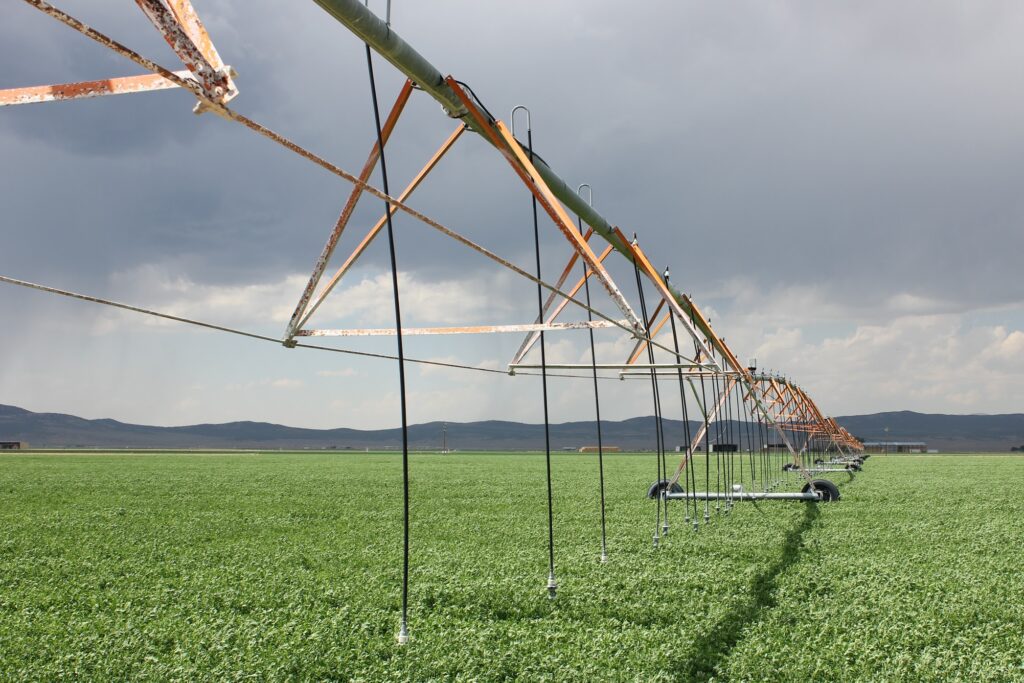
The plan went into effect in 2019 after Jason King, then Nevada’s top water regulator, approved it. Following that, “most everyone did something to their sprinkler packages,” Plaskett said.
But conservation alone was not going to be enough. Some land was going to have to lie fallow. Some producers and companies started to consider alternative land uses, including solar fields.
Jake Tibbitts, Eureka County’s natural resource manager, helped facilitate the crafting of the groundwater plan, and the county supported the groundwater plan. Tibbitts often refers to the valley as the county’s “social glue.” Alternative land uses, he said, must be part of the equation.
When solar developers map out areas with good potential for solar development, Tibbitts said that Diamond Valley continually pops up. As NV Energy builds out more transmission across the state, using retired farmland for solar projects, amid water cuts, could become a viable option.
“There’s two companies already looking at Diamond Valley,” Tibbitts said.
Over the next three decades, as farmers looked to cut more than half of their current water use, more producers would be pressed to find ways to use land with less water, proponents of the plan have argued. The plan provided the incentive, and it also laid out certain cuts on a certain date, making it easier for farmers to work with lenders and evaluate the value of their property.
“All we have to do is have the cuts laid out, and people can do what they want,” Moyle said. “They're gonna get pretty creative pretty fast. We don’t need to write a prescription for them.”
In addition to spacing out the cuts over time, the plan was notable for another reason: It required all irrigators to make a sacrifice. Where Nevada water law protects irrigators with senior rights, the plan departed from that model. It applied cuts to junior and senior rights across the valley.
Some believed this amounted to Diamond Valley writing a new water law. But Moyle argued that nothing in the 2011 statute prevented a local plan from reducing allocations for all water users. After all, he noted that a majority or irrigators, including those with senior rights, voted for it.
“From a water aspect, they had a lot to lose by signing on,” he noted.
Even though the plan distributed more shares to those with senior rights, everyone would see a substantial reduction in their allocations over the next three decades, despite the fact that the state’s water law would typically not require water users with senior rights to give up anything.
For this reason, and several others, District Court Judge Gary D. Fairman struck down the plan in April, concluding that it was “contrary to Nevada water law, laws this court will not change.”
Moyle and Plaskett, along with the state’s top water regulator, are fighting the decision in court.
Moyle serves as the president of the Diamond Natural Resources Protection and Conservation Association (DNRPCA) and Plaskett is its vice president. The group, comprising irrigators who support the groundwater plan, filed an appeal with the Nevada Supreme Court this summer.
With the lower court ruling, the plan is no longer in effect. But the clock continues ticking on the state’s ultimatum to come up with a plan or face curtailment by priority. Without a plan in place, Moyle and Plaskett said that it has fueled uncertainty. Farmers are not sure whether they should invest in conservation — new sprinklers can cost $7,500 a pivot — if state regulators might cut them off soon anyway. Lenders have also been hesitant to issue loans to farmers in the valley.
“They don’t want to get way out on their lending,” Plaskett said.
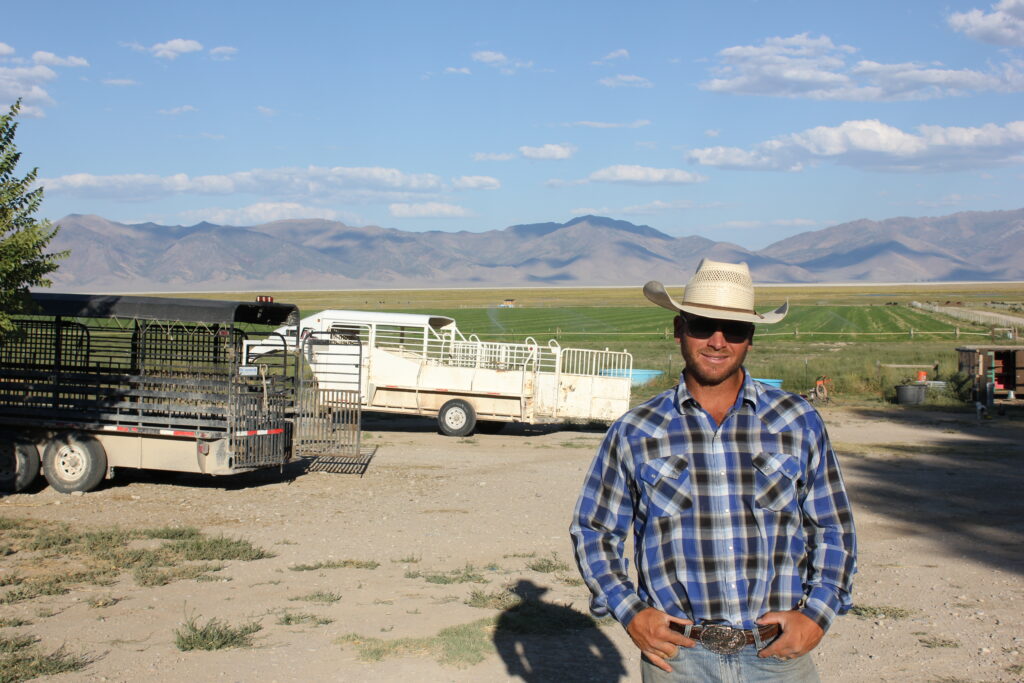
Departing from the rulebook
Sadler Ranch is tucked away on the northern side of the valley, at least a 30-minute drive from most of the center pivots. Shoda, who manages the ranch, understands water law. He grew up in Carson Valley, where he owned a hay company before moving to Eureka. On a windy August afternoon, Shoda sat on a porch, looking out at cattle grazing in front of a long, empty playa.
He does not have anything against a groundwater management plan, he said. His issue is with any plan that departs from a fundamental tenet of Western water law: first in time, first in right.
Depriving senior water users of their full allocation, he said, amounts to a “taking” of their water.
“That’s my biggest problem,” he said.
The springs at Sadler Ranch, the same ones used when the ranch was developed in the late 1800s by former Gov. Sadler, give Shoda and the owners of the ranch standing to make that argument. Because the springs were developed so long ago — even before Nevada water law was written — Sadler Ranch has claims to some of the oldest water rights in Diamond Valley.
Since the plan was approved, Sadler Ranch has challenged it in court. They say the local plan allowed continued overuse for 35 years, by taking a gradual approach to solving an issue that developed over decades. State officials have awarded Sadler Ranch additional water rights to offset their loss. Still, Shoda said the springs cannot be made whole if overpumping continues.
“However this deal works out, in the end, it’s not going to be great for a lot of people,” he said. “I don’t think it’s going to be great for anybody. But again, what do you put on the flip side of that?”
“If we allow everyone to continue pumping, and then the entire basin dries up,” he said.
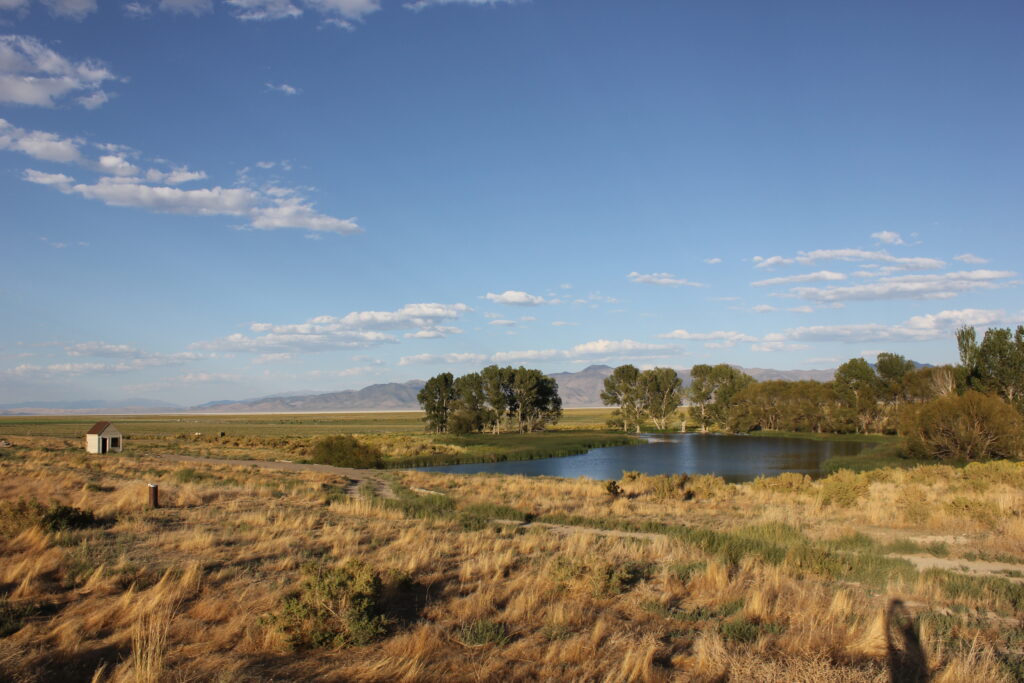
For Sadler Ranch and two other petitioners who challenged the groundwater plan, the localized solution does too little, too late. In a brief filed in District Court last year, attorneys argued that the plan “authorizes persistent, non-stop groundwater mining” from the aquifer.
Proponents of the plan view the gradual cuts as a way to reduce water use over three decades. Yet others see that as a death by a thousand cuts, prolonging the problem for decades and allowing for continued overuse when the law calls on the state to take more immediate action.
Sadler Ranch is not the only rancher pushing back. The owners of another property, also with depleted springs, joined Sadler Ranch in appealing the plan. The owners of both ranches are newcomers to Diamond Valley, having purchased the ranches only recently. It’s a fact that has raised the eyebrows of some local farmers. Why do they want all of this water — and why now?
One longtime Diamond Valley ranching family also challenged the plan in District Court. The family holds five irrigation groundwater rights with senior priority dates. A court brief filed by their attorneys said the plan would ultimately leave them with about 29 percent of their allocations, despite having senior water rights and having lived in the valley since the 1860s.
Despite the plan’s approval by a vote of irrigators, “popularity of a plan does not overrule priority of right,” attorneys for the family told the District Court. The plan, they wrote, should have considered other options, not only a market whereby water rights are turned into shares.
The brief argued that there were other options to create a management plan while protecting the rights of senior water users. For instance, a groundwater plan could have created a basin-wide fee to raise funds that would have compensated senior water users if they reduced their use. Or water users could create a similar market for junior water users that senior users could sell into.
Moyle said that irrigators looked at other options, but he strongly believes that the groundwater plan, as written, is the one that works best for the valley. He said that even gradual reductions would improve the water situation. The plan got community buy-in, even from senior water right users with the most to lose. And it gave the water users “local control” over the valley’s fate.
Other options, he said, were “discussed millions of times in millions of ways.”
The issues in Diamond Valley persist in other parts of the West. Many states rely on the “first in time, first in right” doctrine to settle disputes over water. Other parts of the West have dealt with issues around groundwater in a variety of ways. Courts and legislatures in different states have interpreted the doctrine in different ways, but exceptions to the doctrine are not unprecedented.
In Kansas, for instance, the state has allowed groundwater users to develop local plans to solve overuse, and in some cases, the plans have departed from a strict adherence to “first in time, first in right” rules. Still, in Nevada, courts have been strict about not deviating from the doctrine, and Fairman, the District Court judge, said the Legislature did not intend to make an exception.
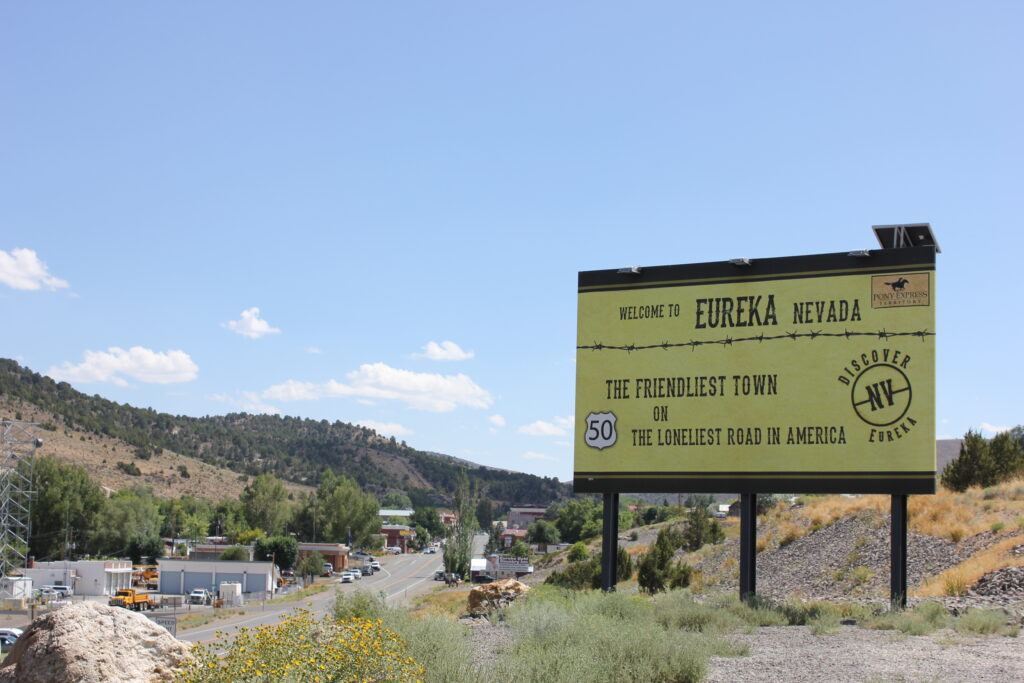
Waiting for the courts
Two-hundred-and-fifty miles away from Carson City, Moyle shuffled through a pile of papers and fished out a copy of Nevada’s water statutes. Moyle, a farmer in Diamond Valley, pointed to one line that he had underlined in blue ink. The interpretation of this line, Moyle said, could dictate his community’s future and whether he can continue farming in the valley. He disagreed with Fairman’s ruling, and he believes this line validates the groundwater plan. The line says that the state must curtail by priority unless local water users come up with an alternative method.
“There were hours spent on this sentence at that time,” Moyle said.
The plan now hinges on the Nevada Supreme Court’s interpretation of the language. But the state is backing Moyle’s interpretation of the law — that a statute passed by the Legislature in 2011 lets local communities develop plans that depart from a strict application of water law.
In a brief filed with the Supreme Court, Deputy Attorney General James Bolotin argued that the Legislature, by allowing local plans, intended to provide an alternative to curtailment by priority.
“The purpose of the [groundwater management plan] statute is to provide a last resort for those basins in the most dire of straits to work together as a community to create a plan that reduces groundwater pumping to levels acceptable to the state engineer to avoid curtailment,” he wrote.
The state engineer serves as Nevada’s top water regulator. For state regulators, a court ruling that strikes down the plan could leave one less option on the table for managing water. Diamond Valley, in many ways, is a test case. It is the first time the state has allowed irrigators to develop a local groundwater plan under the 2011 statute, which did not offer many specific guidelines.
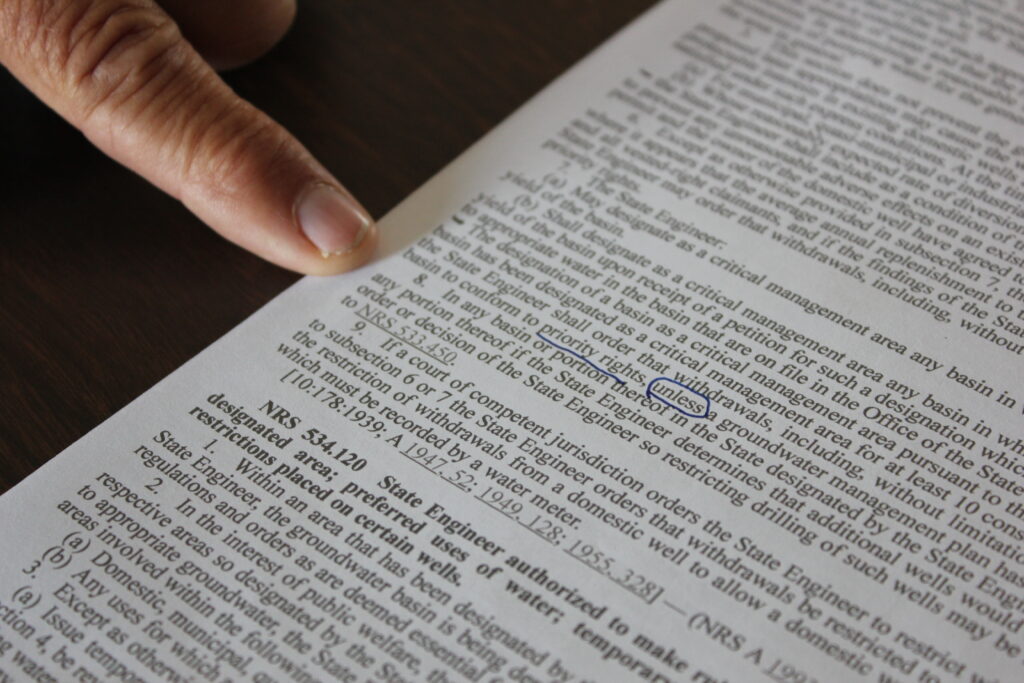
Without a valid plan, curtailment could be coming for Diamond Valley. Whether the Supreme Court approves the plan or not, the valley’s irrigators still face a 2025 deadline for curtailment.
This fact could eventually send the irrigators back to the drawing board.
Throughout the last six years, Tibbitts, Eureka County’s natural resources manager, has helped guide the creation of the plan, keeping irrigators informed of developments through an email list. As the plan has made its way through the courts, Tibbitts has continued to keep them apprised.
“It’s kind of on them to decide what to do,” he said during an interview in August. “And so far, there really hasn’t been any movement by the farmers to come back to the drawing board.”
If no plan is in place by 2025, Tibbitts said there are still “unanswered questions” about how a curtailment would work. From Tibbitts’ perspective, the dividing line between junior and senior rights in Diamond Valley is not all that useful in reality. Because of the rush to develop water in the 1960s, the majority of irrigators have an assortment of junior and senior water rights. His question is this: “Is there something we can do as a community that everyone can live with?”
But there is no doubt that the situation is tense.
“It’s tense for me, and I come to work every day and I get a paycheck every two weeks,” Tibbitts said. “These guys, their livelihoods are on the line. A lot of them invested everything here with their families. They have nothing else other than their farm in Diamond Valley.”
This story was supported by a grant from The Water Desk, an independent journalism initiative based at the University of Colorado Boulder’s Center for Environmental Journalism.